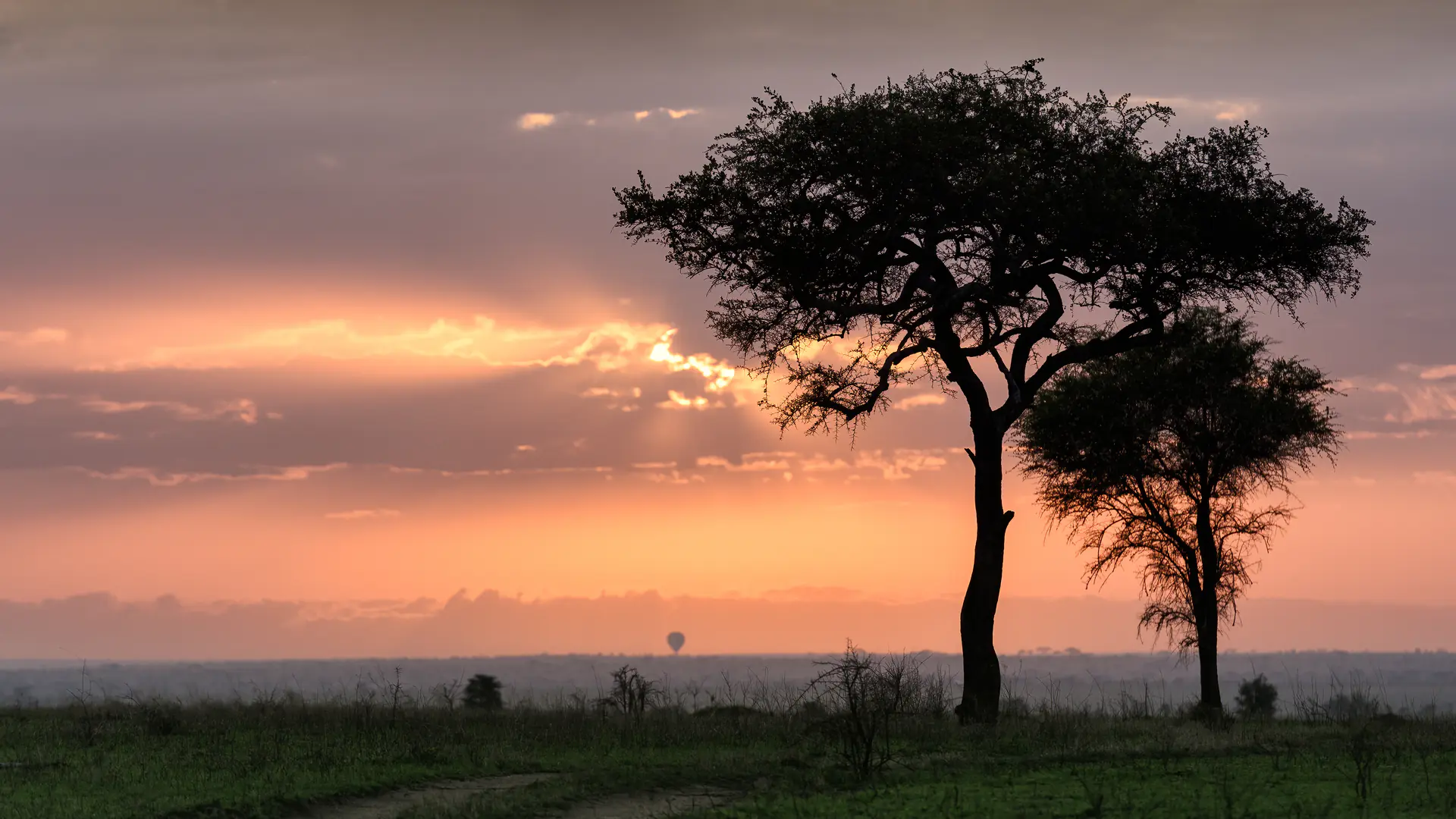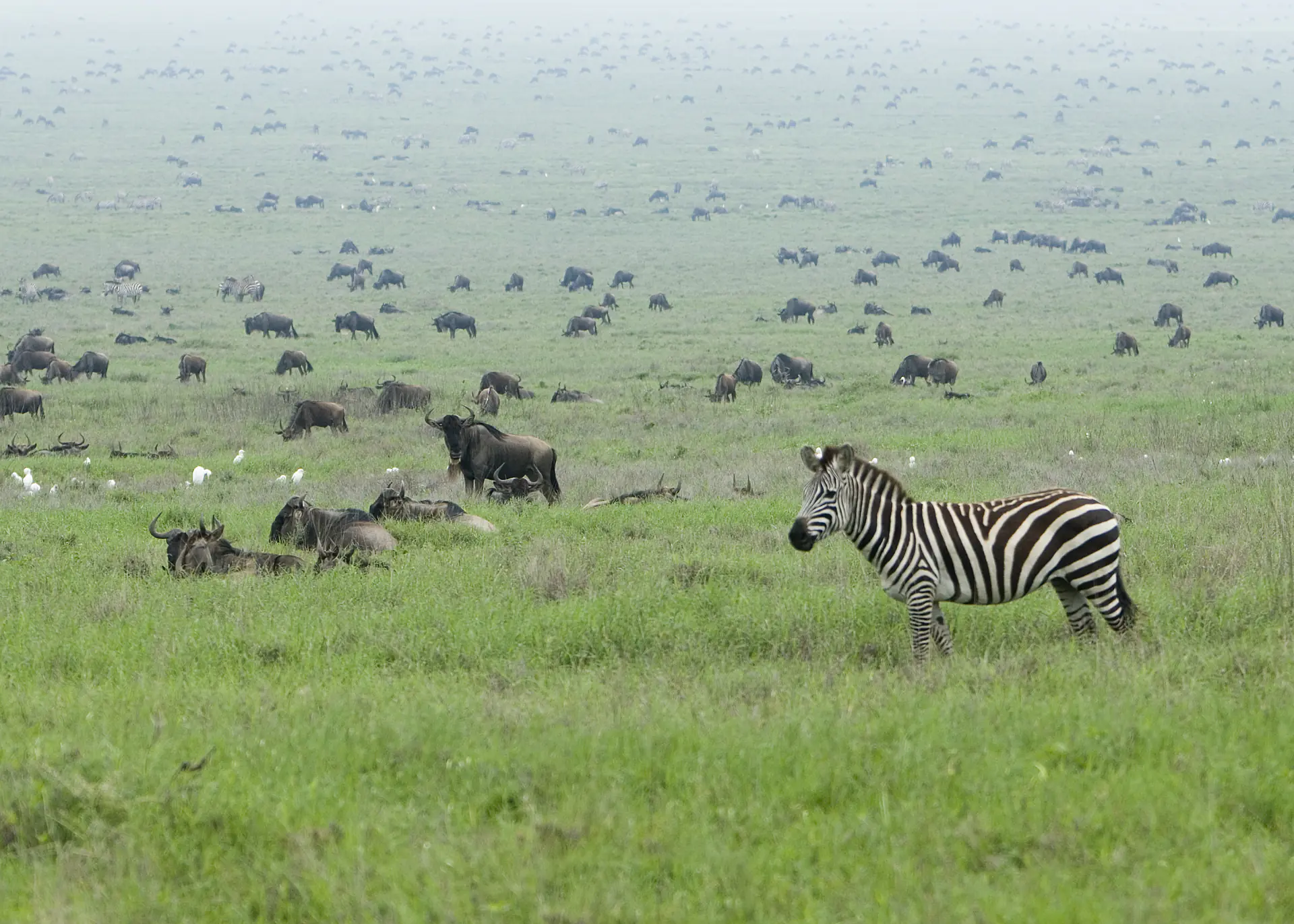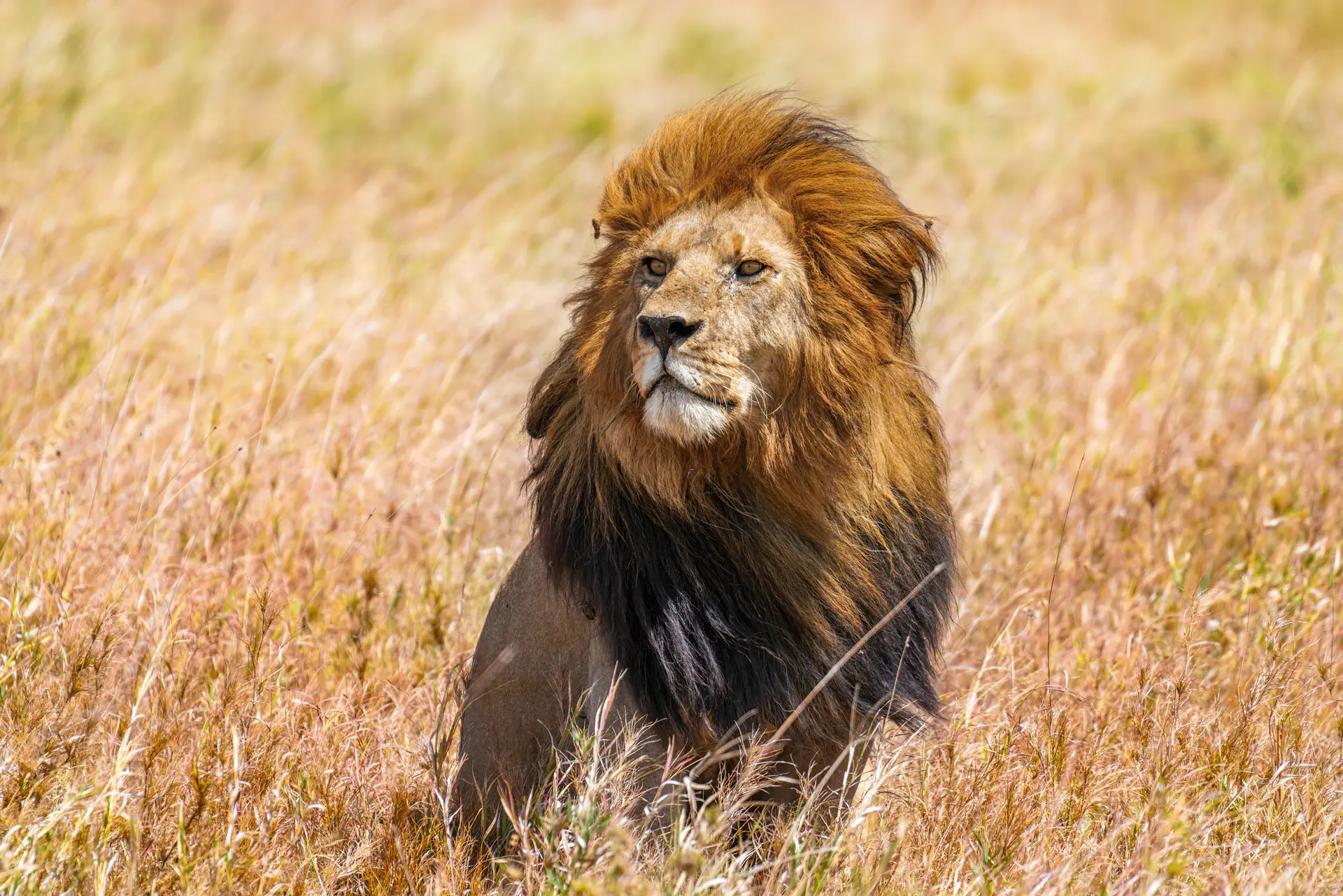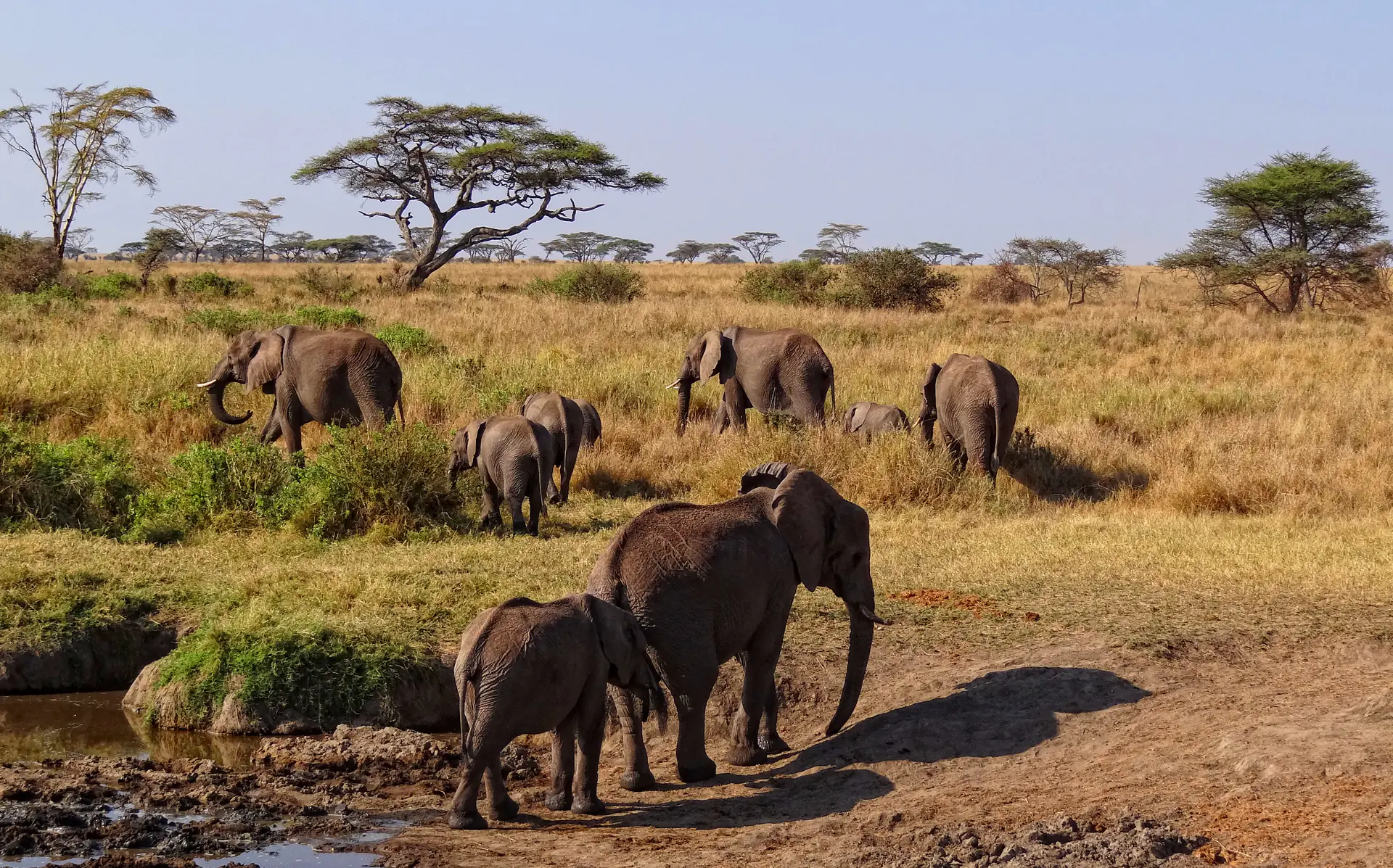
Serengeti National Park: Home to the Greatest Wildlife Migration
Tanzania's Endless Plains Where 1.5 Million Wildebeest Journey
About This Site
Serengeti National Park represents one of Earth's most complete ecosystems, showcasing the annual Great Migration where 1.5 million wildebeest accompanied by 250,000 zebras undertake a 1,000-kilometre circular journey following seasonal rains. This UNESCO World Heritage treasure encompasses 14,763 square kilometres of pristine African savannah supporting the highest concentration of large mammals globally, including Africa's largest lion population exceeding 3,000 individuals alongside leopards, cheetahs, and elephants. The diverse landscape features iconic granite kopjes rising from golden grasslands, riverine forests along the Grumeti and Mara rivers, and vast volcanic plains creating extraordinary habitat diversity. Dramatic Mara River crossings witness thousands braving crocodile-infested waters whilst southern plains transform into nursery grounds during calving season.
Why It Matters
This exceptional natural ecosystem demonstrates Earth's most spectacular wildlife phenomenon through the Great Migration whilst supporting unparalleled biodiversity globally. Serengeti preserves pristine African savannah ecosystem functioning as nature intended, providing an irreplaceable natural laboratory for ecological research and flagship conservation area protecting endangered species populations.
Natural Wonders of Serengeti

The Great Migration
The world's most spectacular wildlife phenomenon witnesses over 1.5 million wildebeest accompanied by 250,000 zebras and countless Thomson's gazelles undertaking an epic 1,000-kilometre circular journey following seasonal rainfall across the Serengeti-Mara ecosystem. This continuous movement driven by instinct and survival creates a perpetual cycle where massive herds traverse endless plains seeking fresh grazing, culminating in dramatic Mara River crossings where thousands of animals brave crocodile-infested waters whilst predators capitalise on vulnerable migrants. The migration attracts Africa's highest predator concentrations including lions, cheetahs, leopards, and hyenas following the herds, whilst over 250,000 wildebeest and 30,000 zebras perish annually from predation, exhaustion, and river drownings, creating one of nature's most powerful demonstrations of life, death, and renewal.

Lions of Serengeti
Serengeti harbours Africa's largest lion population exceeding 3,000 individuals forming complex social structures through numerous prides controlling territories across diverse habitats. These apex predators demonstrate extraordinary hunting strategies including cooperative tactics where females coordinate ambushes whilst males defend territories, capitalising on abundant prey from migration herds and resident ungulates. Research conducted in Serengeti has revolutionised understanding of lion behaviour, social dynamics, and ecological importance, establishing the park as the world's premier location for observing these magnificent cats in natural environments. The Seronera Valley particularly offers exceptional lion viewing with resident prides frequently visible year-round, whilst the kopjes provide favoured resting sites where lions survey territories from prominent granite outcrops.

African Elephant Herds
Serengeti supports substantial African elephant populations wandering vast territories in complex matriarchal herds led by experienced females guiding families to seasonal water sources, feeding areas, and traditional migration routes inherited through generations. These magnificent creatures demonstrate remarkable intelligence through sophisticated communication using infrasound calls travelling kilometres, whilst ecosystem engineering transforms landscapes by toppling trees, creating grassland clearings, and dispersing seeds across distances. The park provides crucial elephant conservation refuge protecting populations from poaching whilst enabling natural behaviours including breeding, migration, and social interactions essential for herd cohesion. Visitors frequently encounter impressive elephant gatherings near rivers and waterholes, particularly during dry season when families congregate at permanent water sources whilst bulls establish dominance hierarchies through dramatic displays.
Location & Planning
Located in northern Tanzania, accessible via Arusha (335 kilometres) by road or scheduled flights to multiple airstrips. Tanzanian shilling (TZS) and US dollars accepted. Book accommodation and safari operators months ahead for peak season.
Loading map...
Frequently Asked Questions
Serengeti National Park is a UNESCO Natural World Heritage site in Tanzania, famous for hosting the Great Migration—Earth's largest animal migration where 1.5 million wildebeest, 250,000 zebras, and countless gazelles journey 1,000 kilometres annually. The park also supports Africa's highest lion population exceeding 3,000 individuals.
Serengeti National Park was established in 1940 as a protected area, granted strict protection status in 1948, and designated UNESCO World Heritage status in 1981. The park has been managed by Tanzania National Parks Authority ensuring conservation of its extraordinary ecosystems and wildlife populations.
The Great Migration is Earth's largest terrestrial animal migration where over 1.5 million wildebeest, 250,000 zebras, and hundreds of thousands of gazelles journey 1,000 kilometres annually following seasonal rainfall patterns. This spectacular phenomenon includes dramatic river crossings and massive calving events attracting predators.
June through October offers exceptional wildlife viewing during dry season with peak migration including spectacular Mara River crossings. January through March provides extraordinary calving season when half million wildebeest calves are born in southern plains, attracting massive predator concentrations including lions and cheetahs.
Drive 335 kilometres (5-6 hours) from Arusha via Ngorongoro Conservation Area, or take daily scheduled flights to Seronera airstrip from Arusha Airport (1-hour flight). Most visitors join organised safari tours providing transport, accommodation, and experienced guides for wildlife viewing throughout the park.
All visitors require entry permits purchased at park gates or pre-booked through Tanzania National Parks Authority. Entry fees support conservation efforts. Visitors must be accompanied by registered guides for safari activities. Vehicle entry permits required for self-drive visitors.
Bring neutral-coloured clothing (khaki, olive, brown), wide-brimmed hat, high-SPF sun protection, binoculars for wildlife viewing, and camera with telephoto lens. Pack warm layers for early morning game drives when temperatures drop significantly. Insect repellent essential for malaria prevention.
Serengeti was designated UNESCO World Heritage status in 1981 for harbouring Earth's largest unaltered animal migration and exceptional biodiversity. The park demonstrates outstanding natural beauty through endless plains whilst supporting the highest concentration of large mammals globally within pristine functioning ecosystem.
UNESCO World Heritage Criteria
Inscribed in 1981, this site meets 2 of UNESCO's 10 criteria for Outstanding Universal Value
Criterion (vii): Contains superlative natural phenomena
The Serengeti plains harbour the largest remaining unaltered animal migration in the world where over one million wildebeest plus hundreds of thousands of other ungulates engage in a 1,000-kilometre annual circular trek spanning the rainy season. This spectacular natural phenomenon provides one of the most impressive wildlife experiences on Earth.
Criterion (x): Contains threatened species
The property exhibits a remarkable spatial-temporal gradient in rainfall, temperature, topography and geology manifesting in exceptional diversity of aquatic and terrestrial habitats. Serengeti supports the highest concentration of large mammals globally whilst maintaining extraordinary biodiversity including over 500 bird species and significant populations of endangered species.
Historical Context
Indigenous Heritage (Pre-1890s)
Maasai pastoralists inhabited Serengeti region for centuries, following seasonal grazing patterns with livestock whilst coexisting with wildlife. The name "Serengeti" is said to derive from the Maasai word "seringit", meaning "endless plains", reflecting the landscape's defining characteristic observed by indigenous communities throughout generations.
European Exploration (1890s-1920s)
European explorers and hunters arrived late 19th century, documenting extraordinary wildlife populations whilst commercial hunting decimated some species. German colonial authorities established partial game reserve in 1921, recognising ecological importance despite continued hunting pressures threatening lion, elephant, and rhinoceros populations.
Park Foundation (1940-1951)
British colonial government established Serengeti National Park in 1940 encompassing 228,600 hectares, though boundaries remained contested with Maasai communities seeking traditional grazing rights. The park expanded significantly following negotiations relocating Maasai pastoralists to Ngorongoro Conservation Area, creating separate land-use zones.
Scientific Revolution (1960s-1970s)
Pioneering research by George Schaller and Serengeti Research Institute transformed ecological understanding through groundbreaking studies of lion behaviour, predator-prey dynamics, and migration patterns. This scientific foundation established Serengeti as premier wildlife research location producing invaluable conservation insights still informing management today.
UNESCO Recognition (1981)
UNESCO designated Serengeti World Heritage status in 1981, recognising exceptional natural values through the Great Migration and extraordinary biodiversity. This international recognition strengthened conservation efforts whilst elevating global awareness of Serengeti's irreplaceable ecological significance for planetary biodiversity.
Conservation Challenges (1990s-2000s)
Poaching pressures intensified during economic hardship periods, decimating rhinoceros populations to local extinction whilst threatening elephants through ivory trade. Strengthened anti-poaching efforts, international cooperation, and community conservation programmes gradually improved protection whilst addressing boundary pressures from expanding human populations.
Modern Management (2010s-Present)
Tanzania National Parks Authority implements sophisticated management strategies including anti-poaching technology, ecological monitoring, and tourism development balancing conservation with economic benefits. Ongoing challenges include proposed infrastructure development, climate change impacts affecting rainfall patterns, and ensuring long-term migration corridor protection beyond park boundaries.
Conservation & Protection
Current Conservation Status
Generally well-protected through active management by Tanzania National Parks Authority, though facing significant pressures from poaching, proposed infrastructure development, climate change, and human-wildlife conflict along park boundaries requiring ongoing conservation interventions.
Conservation Challenges
- Proposed highway construction across northern Serengeti threatening migration routes and potentially fragmenting ecosystem with devastating impacts on wildlife movement patterns
- Poaching pressures particularly targeting elephants for ivory and bushmeat extraction despite anti-poaching efforts, requiring continuous ranger patrols and enforcement
- Climate change altering rainfall patterns, vegetation composition, and water availability affecting migration timing, calving success, and long-term ecosystem dynamics
- Human population growth surrounding park boundaries increasing human-wildlife conflict, livestock competition, and agricultural encroachment threatening buffer zones and migration corridors
- Tourism pressures from excessive vehicle numbers, off-road driving, and habitat disturbance requiring visitor management balancing conservation with economic benefits
Active Conservation Efforts
- Comprehensive anti-poaching programmes deploying ranger patrols, aerial surveillance, intelligence networks, and prosecution strategies significantly reducing illegal hunting
- Transboundary conservation cooperation with Kenya protecting Mara-Serengeti ecosystem through coordinated management ensuring migration corridor integrity across international borders
- Community conservation initiatives providing economic benefits through tourism revenue sharing, employment opportunities, and conservation education programmes building local support
- Scientific research programmes monitoring wildlife populations, migration patterns, and ecosystem health providing essential data informing adaptive management strategies
- Habitat protection extending beyond park boundaries through buffer zones, wildlife corridors, and conservation easements ensuring long-term ecosystem connectivity and migration sustainability
Image & Content Attribution
Research & Content Sources
Photography & Visual Media
Last updated: 11 October 2025